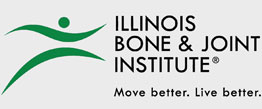Shoulder & Elbow
Shoulder Instability
Shoulder instability is a chronic condition that causes frequent dislocations of the shoulder joint.
Rotator Cuff Tear
Rotator cuff is the group of tendons in the shoulder joint providing support and enabling wider range of motion. Major injury to these tendons may result in tear of these tendons and the condition is called as rotator cuff tear. It is one of the most common causes of shoulder pain in middle aged adults and older individuals.
Frozen Shoulder
Frozen shoulder, also called adhesive capsulitis is a condition characterized by pain and loss of motion in shoulder joint. It is more common in older adults aged between 40 and 60 years and is more common in women than men.
Shoulder Impingement
Shoulder impingement is the condition of inflammation of the tendons of the shoulder joint. It is one of the most common causes of pain in the adult shoulder. The shoulder is a 'ball-and-socket' joint. A ‘ball' at the top of the upper arm bone, humerus, fits neatly into a 'socket’, called the glenoid, which is part of the shoulder blade, scapula. Shoulder impingement is also called as swimmer’s shoulder, tennis shoulder, or rotator cuff tendinitis.
Clavicle Fracture
Clavicle fracture, also called broken collarbone is a very common sports injury seen in people who are involved in contact sports such as football and martial arts as well as impact sports such as motor racing. A direct blow over the shoulder that may occur during a fall on an outstretched arm or a motor vehicle accident may cause the clavicle bone to break. Broken clavicle may cause difficulty in lifting your arm because of pain, swelling and bruising over the bone.
Cubital Tunnel Syndrome
Cubital Tunnel Syndrome is a condition characterized by compression of the ulnar nerve in an area of the elbow called the cubital tunnel.
Tennis Elbow
Tennis elbow is the common name used for the elbow condition called lateral epicondylitis. It is an overuse injury that causes inflammation of the tendons that attach to the bony prominence on the outside of the elbow (lateral epicondyle). It is a painful condition occurring from repeated muscle contractions at the forearm that leads to inflammation and micro tears in the tendons that attach to the lateral epicondyle. The condition is more common in sports activities such as tennis, painting, hammering, typing, gardening and playing musical instruments. Patients with tennis elbow experience elbow pain or burning that gradually worsens and results in a weakened grip.
Rupture of the Biceps Tendon
The biceps muscle is located in the front of your upper arm. It helps in bending your elbow, rotational movements of your forearm and maintaining stability in the shoulder joint. It has two tendons, one of which attaches it to the shoulder bone (proximal biceps tendon) and the other attaches it at the elbow (distal biceps tendon). The biceps tendon can tear at the shoulder or elbow with overuse, or injury when you lift heavy objects or fall on your hand.
Elbow Fractures
Three bones, the humerus, radius and ulna, make up the elbow joint. Elbow fractures may occur from trauma, resulting from various reasons; some of them being a fall on an outstretched arm, a direct blow to the elbow, or an abnormal twist to the joint beyond its functional limit.
Shoulder Arthroscopy
The most common need for a shoulder arthroscopy (or shoulder “scope”) is torn tendons or ligaments/labrum. These conditions are usually a result of an acute injury, but can also occur from overuse or degeneration. “Impingement” is another need for arthroscopy, where shoulder pain is caused by irritation of the tendons in the shoulder by surrounding bony prominences, or by poor posture.
Shoulder Joint Replacement
The most common need for a shoulder replacement is osteoarthritis. Shoulder joint osteoarthritis is a degenerative disease resulting in wearing away of the lubricating cartilage of the shoulder joint. This causes the bones of the shoulder joint to rub together, which produces painful symptoms in the shoulder and upper arm, decreased motion of the shoulder, and pain with reaching, movement, and general use of the affected arm. Sometimes, a crunching noise may be felt or heard when moving the shoulder. Symptoms of arthritis tend to worsen as the degeneration progresses. A total shoulder replacement is a treatment option for patients with end stage osteoarthritis of the shoulder joint, and pain affecting their activities of daily living and quality of life.
Reverse total shoulder replacement
Reverse Total Shoulder Arthroplasty is a type of Shoulder Joint Replacement surgery which addresses not only glenohumeral arthritis, but also shoulder instability. With a traditional Total Shoulder Replacement or arthroplasty, the arthritic surfaces of the glenohumeral joint are smoothed and a prosthetic cup is placed in the glenoid or shoulder socket and a prosthetic ball is inserted into the end of the humerus or arm bone to replace the “ball and socket” joint. This type of surgery is very successful at relieving arthritic pain in patients who have intact rotator cuff tendons and other soft tissue structures to support the new prosthetics and provide good range of motion.
Rotator Cuff Repair
Rotator cuff is the group of tendons in the shoulder joint providing support and enabling wider range of motion. Major injury to these tendons may result in tear of these tendons and the condition is called as rotator cuff tear. It is one of the most common causes of shoulder pain in middle aged adults and older individuals. It may occur with repeated use of arm for overhead activities, while playing sports or during motor accidents. Rotator cuff tear causes severe pain, weakness of the arm, and crackling sensation on moving shoulder in certain positions. There may be stiffness, swelling, loss of movements, and tenderness in the front of the shoulder.
Shoulder Impingement Surgery
Shoulder impingement is the condition of inflammation of the tendons of the shoulder joint. It is one of the most common causes of pain in the adult shoulder. The shoulder is a 'ball-and-socket' joint. A ‘ball' at the top of the upper arm bone, humerus, fits neatly into a 'socket’, called the glenoid, which is part of the shoulder blade, scapula. Shoulder impingement is also called as swimmer’s shoulder, tennis shoulder, or rotator cuff tendinitis.
Open reduction internal fixation
The humerus is the upper arm bone. A fracture of the proximal humerus, the region closest to the shoulder joint, can affect your work and activities of daily living.
Biceps Tendon Repair
The biceps muscle is located in front of your upper arm. It helps in bending your elbow as well as in rotational movements of your forearm. Also, it helps to maintain stability in the shoulder joint. The biceps muscle has two tendons, one of which attaches it to the bone in the shoulder and the other attaches at the elbow. The biceps tendon at the elbow is called the distal biceps tendon and if there is a tear in this tendon, you will be unable to move your arm from the palm-down to palm-up position. Once the distal biceps tendon is torn, it cannot regrow back to the bone and heal by itself. Permanent weakness during rotatory movements of the forearm may occur if the tendon is not repaired surgically.
Elbow Arthroscopy
Elbow arthroscopy, also referred to as keyhole or minimally invasive surgery, is performed through tiny incisions to evaluate and treat several elbow conditions
Elbow Joint Replacement
Elbow Joint Replacement, also referred to as Total Elbow Arthroplasty is an operative procedure to treat the symptoms of arthritis that have not responded to non-surgical treatments.
Non-Operative Treatments for Osteoarthritis
There are many non-operative treatments that can be considered before a patient undergoes a joint replacement surgery. Dr. Durkin likes to exhaust conservative measures before performing surgery on a patient. Once conservative measures fail the patient would be a candidate for a joint replacement.





